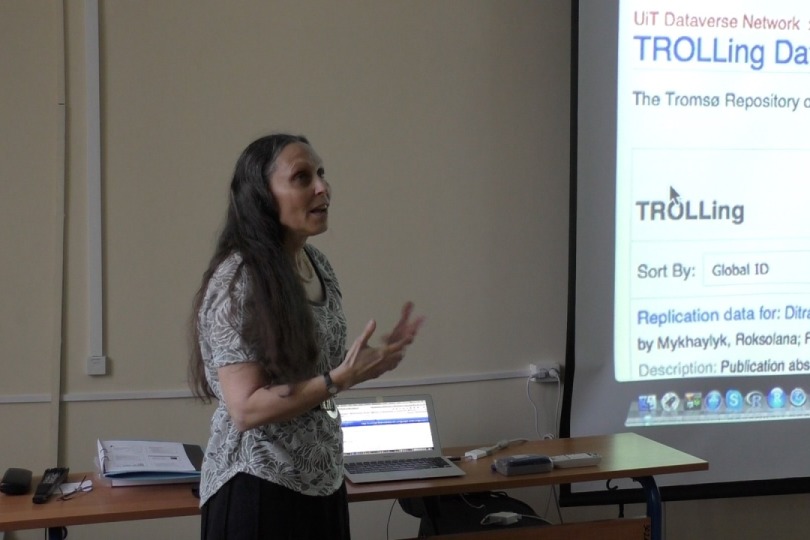- A
- A
- A
- ABC
- ABC
- ABC
- ąÉ
- ąÉ
- ąÉ
- ąÉ
- ąÉ
- HSE University
- Faculties
- Faculty of Humanities
- School of Linguistics
- News
- Lecture 'The Use of Statistics in Cognitive Linguistics' by Laura Janda
The School of Linguistics was founded in December 2014. Today, the School offers undergraduate and graduate programs in theoretical and computational linguistics. Linguistics as it is taught and researched at the School does not simply involve mastering foreign languages. Rather, it is the science of language and the methods of its modeling. Research groups in the School of Linguistics study typology, socio-linguistics and areal linguistics, corpus linguistics and lexicography, ancient languages and the history of languages. The School is also developing linguistic technologies and electronic resources: corpora, training simulators, dictionaries, thesauruses, and tools for digital storage and processing of written texts.
Digital Humanities
Bangkok: Association for Computational Linguistics, 2024.
In press
Kolmogorova A., ąÜčāą╗ąĖą║ąŠą▓ą░ ąĢ. ąĀ., ąøąŠą▒ą░ąĮąŠą▓ ąÆ. ąÆ.
Supercomputing Frontiers and Innovations. 2025. No. 3.
In bk.: BivalTyp: Typological database of bivalent verbs and their encoding frames. .
arxiv.org. Computer Science. Cornell University, 2024

Lecture 'The Use of Statistics in Cognitive Linguistics' by Laura Janda

Abstract
This talk is based on my introduction to the 2013┬ĀThe Quantitative Turn in Cognitive Linguistics┬Ābook.┬ĀBoth the field of cognitive linguistics as a whole and the journal┬ĀCognitive Linguistics┬Āhave taken a quantitative turn in recent years. The majority of conference presentations, articles, and books in our field now involve some kind of quantitative analysis of language data, and results are often measured using statistical methods. This does not mean that other types of contributions (theoretical, introspective) are in any way less welcome in cognitive linguistics, but the quantitative turn in our field is now a fact to be reckoned with.
This book presents some of the people and the statistical methods that have played a leading role in defining the current state of the art in cognitive linguistics, focusing specifically on researchers and methods that have appeared prominently in our journal in the past five years. The ten articles gathered here showcase recent achievements of the following individuals (plus coauthors) who have made quantitative contributions repeatedly in the pages of┬ĀCognitive Linguistics: Ewa D─ģbrowska, Holger Diessel, Dirk Geeraerts, Raymond W. Gibbs, Adele E. Goldberg, Stefan Th. Gries, Beate Hampe, Laura A. Janda, Elena V. M. Lieven, Caroline Rowland, Anatol Stefanowitsch, Anna L. Theakston, Michael Tomasello. Collectively these researchers have done much to shape contemporary practice in statistical analysis in cognitive linguistics, addressing issues at all levels of language, including phonology, morphology, syntax, semantics, acquisition, sociolinguistics, etc. ...
The methods represent those that have proven useful and versatile in linguistic analysis: chi-square, Fisher test, binomial test, ANOVA, correlation, regression, and cluster analysis. Each of these methods, with their advantages and limitations, will be discussed in turn and illustrated by highlights from the articles in this collection. Additional methods that are gaining popularity and may become part of standard use are also presented in that section, and suggestions are made for best practices in the management and sharing of data and statistical code.
Based on a study of articles published in┬ĀCognitive Linguistics, the time period 2008-2012 emerges as a noticeably different era in our history. As described in section 2, the year 2008 marks the quantitative turn for our journal, and the past five years have been substantially different from the two decades that preceded them. It seems unlikely now that we will ever turn back, so this is an appropriate time to take stock of the situation, how it came about, and what it means for our future.
Video of the lecture (Youtube)
- About
- About
- Key Figures & Facts
- Sustainability at HSE University
- Faculties & Departments
- International Partnerships
- Faculty & Staff
- HSE Buildings
- HSE University for Persons with Disabilities
- Public Enquiries
- Studies
- Admissions
- Programme Catalogue
- Undergraduate
- Graduate
- Exchange Programmes
- Summer Schools
- Semester in Moscow
- Business Internship
- © HSE University 1993–2025 Contacts Copyright Privacy Policy Site Map
- Edit

